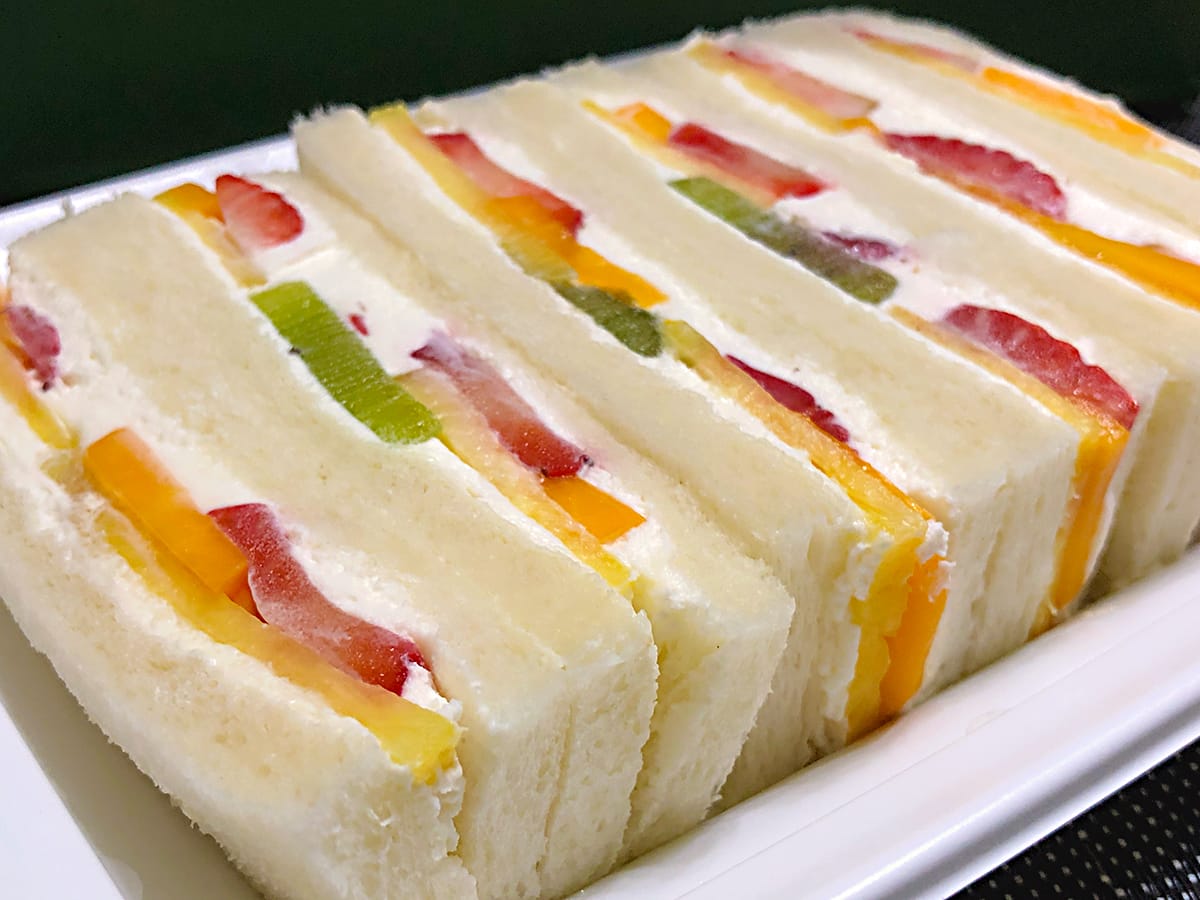
Photo by grape Japan
These fruit sandwiches were ranked as the favorite backstage snack in Japanese showbiz
- Tags:
- Fruit / Fruit sandwiches / Japanese show business / Sandwiches / sashiire / Sembikiya / Sweets
Related Article
-

Japanese restaurant Akomeya Shokudo rolls out a healthy and enticing autumn sweets lineup
-
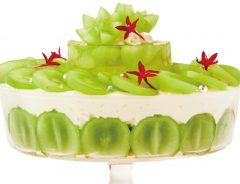
A new #instagood café in Shinjuku! Enjoy café time, bar time and DJ time!
-
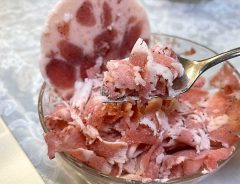
“That has to be frozen pork belly.” Homemade sweets final form has Twitter in disbelief
-
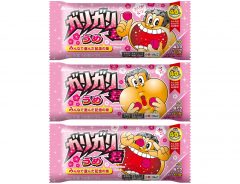
Garigari-kun celebrates 40th anniversary with new Ume flavoured popsicle
-
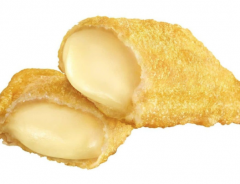
McDonald’s Japan Releases Adult Cream Pie
-

Japan Now Has Pancake Mochi Ice Cream


Fruit sandwiches are a Japanese invention. Known as フルーツサンド furūtsu sando, they're typically made with shokupan milk bread, lightly sweetened fresh whipped cream, and fresh fruits like strawberries, grapes, mandarin oranges, kiwis, mangos, bananas and melons. If you have visited Japan before, you probably know how amazing their fruit can be. It goes without saying that the quality of the fruit can make or break a fruit sandwich. Therefore, the best fruit sandwich makers pride themselves on their star ingredients.
Sembikiya's Fruit Sandwiches
If you're trying a Japanese fruit sandwich for the first time when you visit Japan, you can't go wrong with 千疋屋 Sembikiya. They opened the first fruit parlor in Japan back in 1868 and their name is synonymous with "premium quality fruit." According to one theory, the fruit sandwich was their invention, while another theory claims the origin was Kyoto, where many shops serve the popular sandwiches. They were on the menu at Takano Fruit Parlor when it opened in 1926, so chances are that Sembikiya were serving them as well.
Both in Kyoto and later in Tokyo, Sembikiya's fruit sandwiches were enjoyed as 差し入れ sashiire backstage snacks, at first by geishas and kabuki actors, and then later by artists, actors, entertainers and other members of Japanese show business. For the same reason that Maisen's pork katsu sandwiches were popular with Takarazuka actresses, as we saw in our review earlier this month, Sembikiya fruit sandwiches were appreciated because their compact size allowed entertainers to eat them quickly with one hand without making a mess during break times or intermissions.
Sembikiya fruit sandwiches have such a long history that they’ve had time to establish their excellent reputation. In a 2022 ranking of 30 sashiire enjoyed in Japanese showbiz compiled by ranking media Rank1, they were the number one choice.
Some of the celebrities who have been introduced on TV as fans of the sandwiches are award-winning actress and model 松嶋 菜々子 Nanako Matsushima, known for her role in the 1998 horror film Ring, and actor 佐々木蔵之介 Kuranosuke Sasaki, known for such roles as businessman Hisashi in the 2005 cult classic Densha Otoko (Train Man), Fukubei Hattori in the 2008-9 film adaptations of 20th Century Boys and Kai Shimada in the 2017 film adaptations of March Comes In like a Lion.
Although we had tasted Sembikiya's amazing "special parfait" when we visited the Fruit Parlor at Sembikiya Sōhonten (Main Store), at their flagship store in Nihonbashi, we had never eaten their famous fruit sandwiches, so we were eager to try them.
Presentation
As expected from such a venerable establishment, they came in an elegant paper bag. The sandwiches themselves were packed in a plastic case, functional yet elegant, with the Sembikiya logo printed on it in gold lettering. Naturally, they also came with moist towelettes.
Photo by grape Japan
When we removed the plastic lid, we were instantly greeted by the sweet and fragrant aroma of ripe fruit and cream. Following the same principle as British tea sandwiches, with thin fillings and cut into a compact size that can be easily held in one hand, they didn't look anything like the versions of fruit sandwiches recently populating social media accounts featuring flowers or other decorative designs when you cut them in half.
Photo by grape Japan
Although they are colorful and make an appealing impression lined up in rows in their box, Sembikiya's fruit sandwiches prioritize form and function over decorative flair, and most of all, their taste.
Photo by grape Japan
We had high expectations on our first bite...
Photo by grape Japan
...and we weren't disappointed.
The mangos, pineapples, kiwis and strawberries were amazingly fragrant, flavorful and sweet and left us wanting to eat more and more. We soon realized that the sweetness of the rich whipped cream was purposefully restrained, as was the soft milk bread which didn't have a brioche-like sweetness that some shokupan can bring. Both the cream and the bread were designed to play supporting roles for the star vehicle, Sembikiya's amazing fruits.
We finished the box of sandwiches in no time. They were so light and tasty that we felt we could even have more.
If you want to try Sembikiya's fruit sandwiches, keep in mind that there are three separate brands, the 千疋屋総本店 Sembikiya Sōhonten (Main Store) with its flagship store in Nihonbashi, 銀座千疋屋 Ginza Senbikiya, and 京橋千疋屋 Kyobashi Senbikiya. Their fruit sandwiches may vary in form and content depending on which branch you visit.
The sandwiches we tried, from 千疋屋総本店 Sembikiya Sōhonten, cost 1,400 JPY plus tax, and were worth every yen. Why don't you try some the next time you're in Japan?